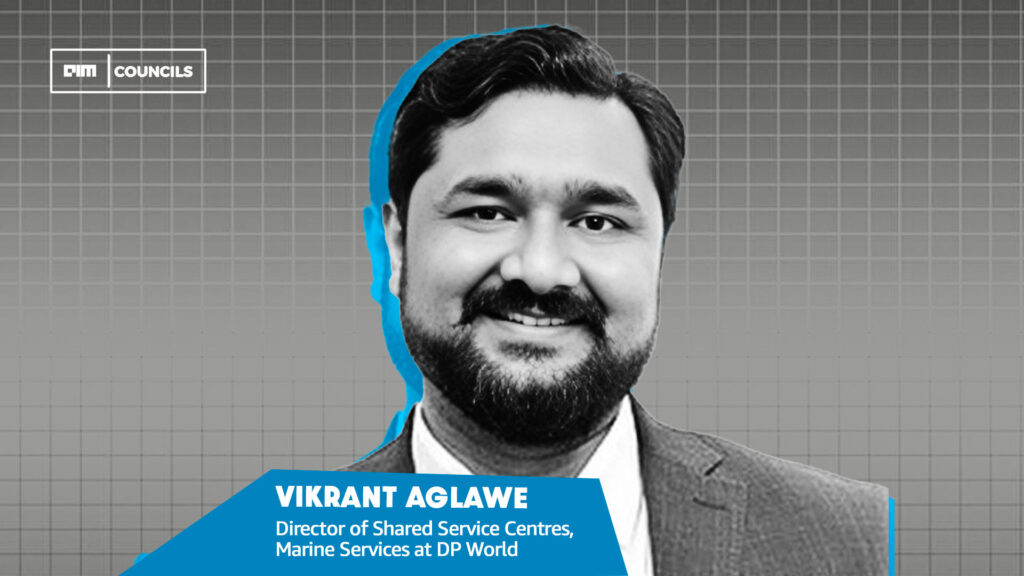Introduction: Navigating the Complex Landscape of Maritime Technology
After fifteen years of hands-on experience implementing digital solutions across global shipping operations, I’ve witnessed firsthand how emerging technologies are reshaping our industry. Among these, artificial intelligence stands out as both the most promising and most misunderstood innovation. The shipping sector currently finds itself at a crossroads, where the line between genuine AI applications and conventional automation has become dangerously blurred. This distinction matters profoundly because true machine learning implementations demand fundamentally different strategies, resources, and expectations than rules-based automation systems.
The maritime industry’s relationship with AI follows a trajectory we’ve seen in other capital-intensive sectors. There’s the initial wave of enthusiasm when leadership teams see polished demonstrations, followed by the inevitable disillusionment when implementation challenges emerge, and finally, for those who persist, a stage of productive integration. Current industry data reveals a telling gap: while nearly 90% of major shipping companies report experimenting with AI, only about 30% have successfully moved beyond pilot phases. This disparity stems from fundamental misunderstandings about what AI can realistically achieve in our complex operational environment.
What Real AI Means in Shipping
To truly understand AI’s impact, we need to distinguish it from basic automation. In shipping, real AI refers to systems that learn from data and improve over time without being manually reprogrammed. For example, predictive maintenance tools can detect equipment issues by studying past performance, pricing engines can automatically adjust to market changes, and computer vision systems can become more accurate at identifying objects as they gain more experience.
Robotic Process Automation (RPA) represents an entirely separate category, a software programmed to follow predefined rules for automating repetitive tasks. This includes standard document processing systems, automated data entry tools, or workflow routing applications that operate within fixed parameters. While valuable, these solutions lack the adaptive qualities that define true AI. A third category encompasses hybrid systems that combine RPA’s efficiency with AI’s cognitive capabilities. These remain relatively rare in maritime applications due to their complexity.
RPA vs. AI: Key Differences
| Feature | RPA (Robotic Process Automation) | AI (Artificial Intelligence) |
| Definition | Automates rule-based, repetitive tasks. | Simulates human intelligence to learn, adapt, and make decisions. |
| Core Function | Follows predefined workflows and rules. | Uses data-driven learning to improve decision-making. |
| Learning Capability | Does not learn or improve over time. | Continuously learns from data and adapts. |
| Complexity | Handles structured data and simple logic-based tasks. | Processes unstructured data and complex patterns. |
| Use Cases | Data entry, invoice processing, and repetitive administrative tasks. | Chatbots, fraud detection, predictive maintenance, and decision support. |
| Human Intervention | Requires humans to configure rules and update workflows. | Can function autonomously with minimal human input. |
The Reality of Document Processing Solutions
Much of what’s currently marketed as “AI” in shipping document processing constitutes sophisticated RPA implementations. At a major container line, we recently advised that their automated bill of lading system successfully handles approximately 70% of standard documents without human intervention. However, this achievement resulted from meticulous rules-based programming rather than machine learning.
The implementation followed classic RPA methodology. First came months of process mapping to develop comprehensive decision trees for document routing. Next, engineers created precise template-matching algorithms capable of extracting data from standardized forms. The system flags any documents deviating from expected parameters for human review according to predetermined criteria. While delivering substantial efficiency gains, such as reducing processing times by 40% and error rates by 65%, this remains fundamentally different from true artificial intelligence.
The limitations become apparent when dealing with non-standard scenarios. Unlike AI systems that could theoretically learn to handle new document formats over time, this RPA solution requires manual updates whenever encountering previously unseen variations. This distinction explains why many shipping companies find their “AI” implementations struggle to adapt to the industry’s constant variability.
Authentic AI Applications Transforming Maritime Operations
Genuine machine learning applications emerge in areas requiring pattern recognition, predictive capabilities, and adaptive learning. These are the challenges where rules-based automation falls short. The Port of Rotterdam’s smart scheduling system is a great example of real AI in action. It analyzes past vessel arrival patterns, uses real-time weather data, and keeps improving by learning from day-to-day operations. This has led to a 15% drop in truck wait times and better use of assets.
What makes this AI authentic is its adaptive nature. The system doesn’t merely follow predefined rules about ship scheduling; it develops and refines its own models based on continuous data input. When unexpected events occur—say, a sudden labor shortage or equipment failure—the system adjusts its recommendations accordingly. These dynamic capabilities would be impossible to achieve with conventional automation alone.
Predictive maintenance represents another domain where true AI delivers unique value. A European carrier implemented vibration analysis sensors coupled with machine learning algorithms that monitor engine performance across multiple parameters. The system identifies subtle degradation patterns that human engineers might miss, predicting potential failure points with 85% accuracy and recommending optimal maintenance windows. This implementation reduced unplanned downtime by 20%, translating to millions in annual savings from avoided delays and repairs.
AI’s Growing Role in Maritime Risk Management
The pattern recognition capabilities of machine learning prove particularly valuable in risk management applications. Advanced fraud detection systems analyze booking patterns across dozens of variables – payment histories, cargo types, routing preferences, and more – detecting subtle anomalies that may indicate fraudulent activity. Unlike static rules-based systems that only flag known red flags, these AI solutions adapt as fraudsters evolve their tactics.
Using this approach, a global freight forwarder reduced fraudulent bookings by 25%. This approach further improved the system’s detection rate by approximately 3% monthly as it learned from new cases. The AI identified several sophisticated fraud patterns that had previously gone undetected for months, including a scheme involving manipulated cargo weight declarations. Importantly, the system doesn’t make final determinations—it flags potential issues for human investigators, combining AI’s pattern recognition with human judgment.
The Implementation Challenges of True AI Systems
Successful AI projects differ markedly from conventional automation implementations in their requirements and challenges. The foremost hurdle is data quality and quantity. Machine learning models require thousands of accurately labeled examples to achieve reliable performance, a stark contrast to RPA systems that can work with relatively small, clean datasets. One carrier spent six months cleaning five years of maintenance records before their predictive system could deliver actionable insights.
Continuous learning mechanisms represent another critical differentiator. Unlike RPA systems that operate within fixed parameters until manually updated, AI solutions need structured feedback loops to improve over time. We’ve addressed this by creating specialized “AI trainer” roles where operations staff validate predictions and correct errors. At one Asian terminal, these trainers reviewed approximately 10% of AI-generated scheduling recommendations, providing feedback that allowed the system to refine its models.
The infrastructure demands also differ significantly. Machine learning applications, particularly those requiring real-time analysis like dynamic pricing engines, demand substantial processing power and specialized hardware. Many shipping companies need to invest in new computational resources or cloud-based solutions to support these implementations—a consideration that doesn’t apply to most RPA projects.
Building Effective Human-Machine Collaboration
The most successful technology implementations in shipping recognize the distinct strengths of each approach and the importance of human oversight. Rules-based automation delivers reliable efficiency gains for standardized and repetitive processes like data entry or invoice processing. True AI applications solve fundamentally different problems, such as pattern recognition, prediction, and adaptation to changing conditions.
Specialized roles have proven critical in these implementations. While RPA systems typically require process engineers to define workflows, AI systems need data scientists to develop models and domain experts to provide the contextual knowledge that guides learning. Forward-thinking organizations are creating hybrid positions that bridge these disciplines. At a Mediterranean shipping company, “automation specialists” now work alongside operations teams to identify which processes suit RPA versus which require AI solutions, ensuring proper technology alignment with business needs.
Conclusion: Strategic Technology Alignment for Maritime Excellence
Shipping companies achieving meaningful results from digital transformation understand that artificial intelligence and conventional automation serve different purposes. RPA delivers consistent, measurable improvements for rule-based processes with clear parameters—the “known knowns” of operations. True AI applications address the “known unknowns”—predicting equipment failures, optimizing complex logistics networks, or identifying emerging risks that follow patterns but resist simple rules.
The path forward requires an honest assessment of operational challenges and their corresponding solutions. Artificial intelligence is more than just “better automation”; it is a fundamentally different tool for different fundamental challenges. Organizations that develop the discernment to properly diagnose their needs, while building the cross-disciplinary expertise to implement each technology effectively, will gain sustainable competitive advantages in an increasingly digital maritime landscape.
As the industry continues its technological evolution, the most successful operators will resist the temptation to label every automation project as AI; instead, they will make deliberate and informed choices about where genuine machine learning can create unique value. This clarity of vision, combined with pragmatic implementation strategies, will separate the leaders from the followers in the coming decade of digital transformation.












